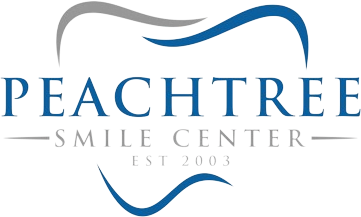Achieving professional-level teeth cleaning at home is possible with the right techniques and tools. While regular dental visits remain essential, mastering hygienist-approved methods can significantly improve your oral health between appointments.
This comprehensive guide reveals the exact steps dental professionals use, from proper brushing techniques to preventing gum disease through targeted cleaning strategies. Ready to take your oral health to the next level? Schedule an appointment with Peachtree Smile Center for preventive dentistry and personalized guidance on maintaining healthy teeth between visits.
Can you clean your own teeth like a dental hygienist?
Yes, you can achieve near-professional cleaning results at home with proper technique and dedication. While you can’t remove hardened tartar like a hygienist, you can prevent its formation through consistent, thorough cleaning. Daily attention to your teeth using professional methods significantly reduces plaque buildup and maintains healthier gums. However, this home care only complements and does not replace regular professional cleanings.
7 Signs You Need to See a Dental Hygienist
- Persistent bad breath
- Bleeding gums
- Visible tartar buildup
- Tooth sensitivity
- Loose teeth
- Gum recession
- Dark spots or staining
How to Properly Clean Your Teeth at Home
Essential Tools for Professional-Level Cleaning
- Electric toothbrush with soft bristles
- Fluoride toothpaste
- Traditional floss or floss picks
- Water flosser
- Interdental brushes
- Antimicrobial mouthwash
- Tongue scraper
- Dental mirror and light
A 10-Step Guide to Your At-Home Dental Cleaning
- Start with a pre-rinse – Swish water vigorously for 30 seconds to loosen food particles and prepare your mouth for cleaning.
- Apply the two-minute brushing rule – Divide your mouth into four quadrants and spend 30 seconds on each section, ensuring every tooth surface gets attention.Use proper
- brushing technique – Hold your electric toothbrush at a 45-degree angle to the gum line, letting the bristles do the work without applying excessive pressure.
- Don’t forget the gum line – Gently massage along where teeth meet gums to prevent gum disease and remove hidden plaque.
- Clean all tooth surfaces – Brush the outer surfaces, inner surfaces, and chewing surfaces of all teeth systematically.
- Master the flossing technique – Use 18 inches of floss, wrap it around your middle fingers, and gently guide it between teeth using a C-shape motion against each tooth.
- Consider water flossing – If traditional flossing is difficult, use a water flosser on medium pressure to flush out debris and bacteria.
- Clean your tongue – Use a tongue scraper or your toothbrush to remove bacteria from back to front in gentle strokes.
- Finish with mouthwash – Rinse with antimicrobial mouthwash for 30-60 seconds to reach areas brushing and flossing might miss.
- Inspect your work – Use a dental mirror to check for any visible plaque, food particles, or areas needing extra attention.
3 Troubleshooting Common Teeth Cleaning Challenges
Addressing Sensitive Teeth During Cleaning
Sensitive teeth require gentler cleaning techniques and specialized products. Switch to a soft-bristled brush and toothpaste designed for sensitivity, which contains ingredients that block pain signals. Avoid aggressive brushing and use lukewarm water instead of cold to minimize discomfort. If sensitivity persists despite these adjustments, consult your dentist, as it may indicate underlying issues requiring professional treatment.
Managing Bleeding Gums and Early Gum Disease
Bleeding gums often indicate gingivitis, the early stage of gum disease, but don’t let this discourage you from cleaning. Continue gentle brushing and flossing, as removing bacteria is crucial for healing inflamed gums. Use an antimicrobial mouthwash to help reduce bacterial load, and consider switching to an electric toothbrush for more effective plaque removal. If bleeding continues beyond two weeks of improved oral hygiene, seek professional evaluation to prevent progression to periodontitis.
Adapting Techniques for Dental Work and Braces
Dental work requires modified cleaning approaches to protect dental restorations and ensure thorough hygiene. Each type of dental work presents unique challenges that demand specific adjustments to your routine. Understanding these modifications helps maintain both your natural tooth structure and dental investments.
6 Types of Dental Work and Their Common Adjustments
- Braces – Use orthodontic floss threaders to navigate around wires and brackets, and invest in interdental brushes to clean between brackets effectively.
- Crowns – Pay special attention to the crown margins where they meet your natural teeth, as bacteria often accumulate in these junction areas.
- Bridges – Thread floss under the bridge using special floss threaders, or consider a water flosser to flush out trapped food particles daily.
- Implants – Clean around implants gently but thoroughly, using soft brushes and non-abrasive toothpaste to protect the implant surface.
- Veneers – Avoid abrasive toothpastes and use gentle circular motions to preserve the veneer surface while maintaining cleanliness at the gum line.
- Dentures or partials – Remove and clean these appliances separately each night, while maintaining excellent hygiene for the remaining natural teeth.
4 Benefits of Proper At-Home Cleaning
Prevention of Gum Disease
Consistent at-home cleaning is your first defense against gum disease, which affects nearly half of adults over 30. By removing plaque daily, you prevent the bacterial buildup that causes gingivitis and periodontitis. This proactive approach saves you from painful symptoms like swollen, bleeding gums and potential tooth loss. Regular cleaning also helps you avoid expensive periodontal treatments and maintains the foundation for lifelong oral health.
Reduced Risk of Cavities
Thorough daily cleaning removes the bacteria and food particles that produce cavity-causing acids on your teeth. When you clean effectively at home, you disrupt the process that leads to tooth decay before it can damage enamel. This prevention means fewer fillings, less time in the dental chair, and stronger teeth throughout your life. The fluoride in toothpaste also remineralizes early decay spots, potentially reversing damage before cavities form.
Fresher Breath and Improved Confidence
Proper oral hygiene eliminates the bacteria responsible for bad breath, giving you confidence in social and professional situations. When you remove food debris and bacterial film from teeth, tongue, and gums, you address the root cause of most breath issues. This fresh feeling lasts throughout the day and makes close conversations more comfortable. The clean, smooth feeling of well-maintained teeth also boosts your self-esteem and encourages more frequent smiling.
Long-Term Cost Savings
Investing time in proper at-home care saves thousands of dollars in dental treatments over your lifetime. Prevention costs pennies compared to treating advanced decay, gum disease, or tooth loss. By maintaining excellent oral hygiene, you reduce the need for expensive procedures like root canals, crowns, and implants. This financial benefit compounds over time, making your daily cleaning routine one of the best investments in your overall health and budget.
Conclusion
Mastering professional-level teeth cleaning at home transforms your oral health and prevents costly dental problems. With the right tools, techniques, and consistency, you can maintain healthy teeth and gums between professional visits.
Ready to perfect your oral care routine? Schedule an appointment with us at Peachtree Smile Center for personalized preventive dentistry guidance. Follow us on Facebook, Instagram, and TikTok for more dental tips, and check out our reviews on Yelp and NextDoor to see why patients trust us with their smiles.



